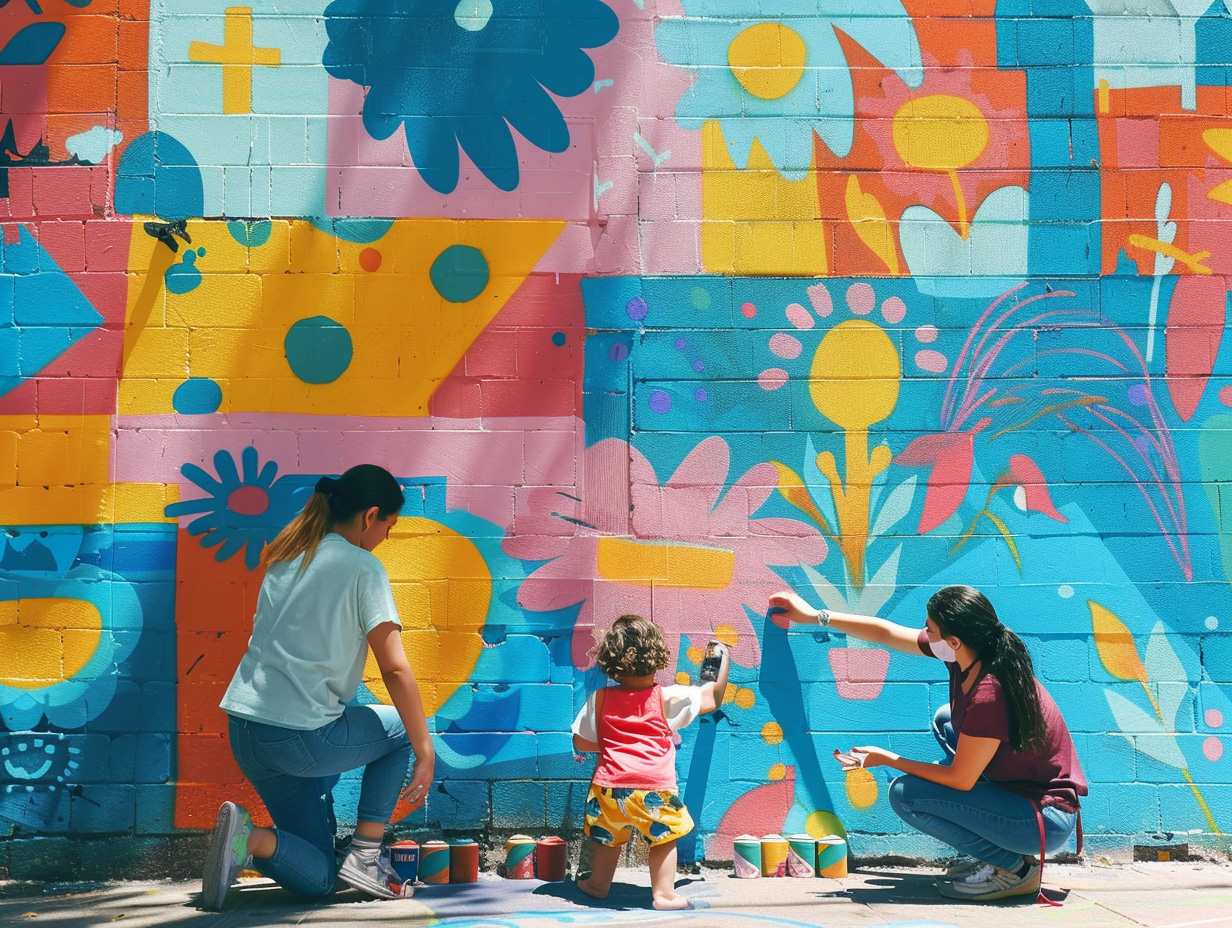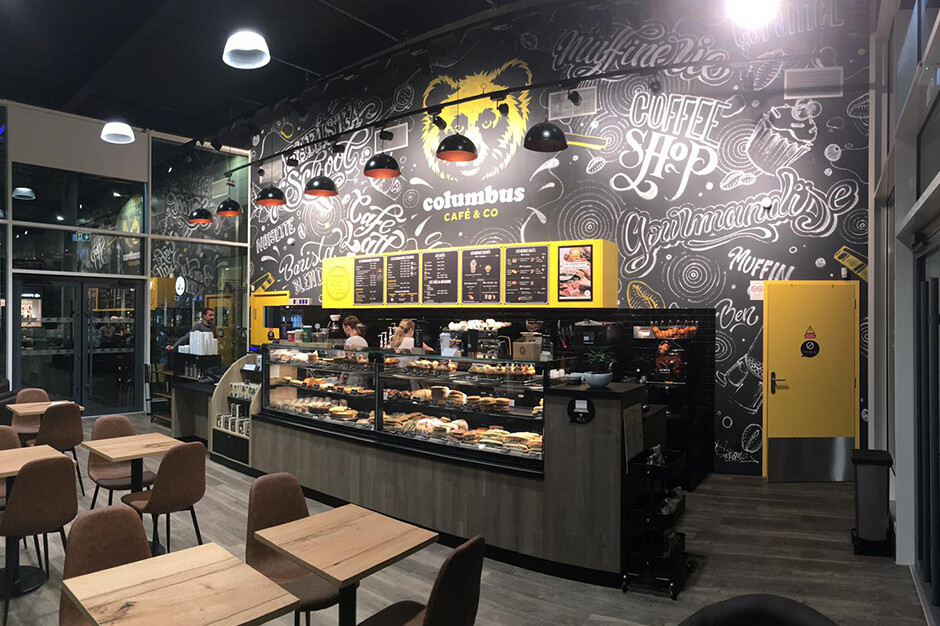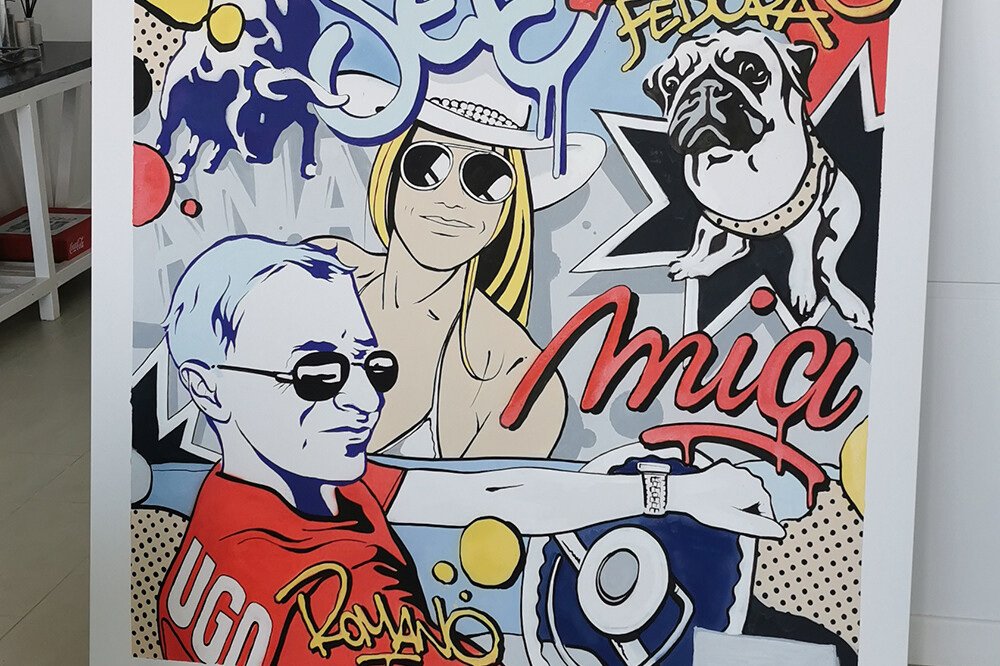Immersing children in the vibrant tapestry of history can sometimes feel like an uphill battle against short attention spans and modern distractions. But what if there was a way to transport them back in time effortlessly, igniting their curiosity and capturing their imagination? Enter the enchanting realm of street art in Dubai, where the past seamlessly converges with the present to create a dynamic playground for young minds. As you stroll through the ancient alleyways of Al Fahidi, a hidden gem nestled amidst the glitzy skyscrapers of Dubai, you’ll find more than just weathered stones and timeworn artifacts. Educational murals come to life on the walls, each brushstroke whispering tales of bygone eras and cultural nuances. These artistic masterpieces serve as portals to a world where history isn’t just studied but experienced firsthand, making the past a vibrant playground for budding enthusiasts of all ages. Join us on a journey where storytelling through art transcends mere aesthetics, paving the way for a deeper appreciation of Dubai’s rich heritage like never before.
 Discovering Al Fahidi: A Gateway to Dubai’s Past
Discovering Al Fahidi: A Gateway to Dubai’s Past
Al Fahidi, also known as the Bastakiya Quarter, is a historic neighborhood in Dubai that offers a glimpse into the city’s past. As you wander through its narrow lanes and wind towers, you’ll be transported back in time to a bygone era. The district is home to traditional courtyard houses, museums, art galleries, and charming cafes.
One of the highlights of Al Fahidi is its collection of street art murals. These vibrant artworks adorn the walls of the neighborhood, adding a contemporary touch to its historical charm. Each mural tells a story, depicting scenes from Dubai’s rich history and culture. From pearl diving expeditions to bustling souks, these artworks bring the past alive in vivid colors.
Exploring Al Fahidi is like stepping into an open-air museum where every corner holds a piece of history waiting to be discovered. The combination of traditional architecture and modern street art creates an immersive experience that engages both children and adults alike.
Unveiling the Stories Behind the Murals
The murals in Al Fahidi are not just aesthetically pleasing; they also serve as educational tools for children. Each artwork is accompanied by informative plaques that provide insights into the historical events or cultural traditions depicted in the mural.
Children can learn about Dubai’s past through these visual narratives, making history come alive before their eyes. They can discover how Dubai transformed from a humble fishing village into a global metropolis through trade and innovation. The murals act as storytellers, sparking curiosity and encouraging further exploration.
By engaging with street art at such a young age, children develop an appreciation for their heritage and gain a deeper understanding of their roots. They begin to see history not as something confined to textbooks but as a living, breathing entity that shapes their present and future.
 Learning History Through Creative Expression
Learning History Through Creative Expression
Street art provides a unique platform for creative expression and learning. It allows artists to communicate complex historical narratives in a visually appealing and accessible manner. By incorporating elements of storytelling, symbolism, and cultural references, these murals captivate the imagination of young learners.
Children can decipher the hidden meanings behind the artworks, unraveling layers of history with each stroke of paint. They develop critical thinking skills as they analyze the visual cues and connect them to their knowledge of Dubai’s past. This interactive approach to learning fosters a sense of curiosity and empowers children to become active participants in their own education.
Moreover, street art encourages children to think outside the box and embrace creativity. It inspires them to express themselves through various art forms, whether it be painting, drawing, or even writing their own stories inspired by the murals they encounter.
Preserving Heritage Through Urban Art Initiatives
The integration of street art into historical sites like Al Fahidi serves a dual purpose: preserving heritage while promoting contemporary artistic expression. These initiatives breathe new life into neglected spaces and encourage visitors to engage with their surroundings on a deeper level.
By revitalizing these areas with vibrant murals, local authorities create an environment that fosters cultural appreciation and tourism. Visitors are drawn not only by the historical significance but also by the allure of discovering hidden gems around every corner.
The juxtaposition of old and new creates a harmonious blend that appeals to both locals and tourists alike. It showcases Dubai’s commitment to preserving its heritage while embracing modernity.
The Impact of Street Art on Children’s Historical Awareness
Exposure to street art at historical sites like Al Fahidi has a profound impact on children’s historical awareness. It sparks their curiosity, encourages them to ask questions, and instills a sense of pride in their cultural heritage.
Children become active participants in their own learning journey as they explore the murals and engage with the stories they tell. They develop a sense of empathy as they connect with the struggles and triumphs of those who came before them.
Street art also breaks down barriers to learning by making history accessible and relatable. It transcends language barriers and engages children from diverse backgrounds, fostering inclusivity and understanding.
 Inspiring the Next Generation of Historians
Inspiring the Next Generation of Historians
The impact of street art on children’s historical awareness extends beyond the walls of Al Fahidi. It ignites a passion for history that can shape their future pursuits.
By experiencing history through art, children are inspired to delve deeper into Dubai’s past. They may seek out books, documentaries, or even pursue careers in archaeology, anthropology, or museum curation.
Street art serves as a catalyst for lifelong learning, nurturing a generation of historians who will continue to preserve and celebrate Dubai’s rich heritage for years to come.
In conclusion, street art at historical sites like Al Fahidi in Dubai provides an innovative way to bring history alive for kids. Through educational murals, children can immerse themselves in the stories of the past while developing a deeper appreciation for their cultural heritage. By combining creativity with historical narratives, street art inspires curiosity and fosters a love for learning that extends far beyond the walls of Al Fahidi.
Related Posts
17 mai 2023
Elevating food courts: the impact of art murals in Dubai
In Dubai's competitive food court…


